JUST A COUPLE OF DESERT RIVER GUIDES
Desert River Guides – Farmington, NM
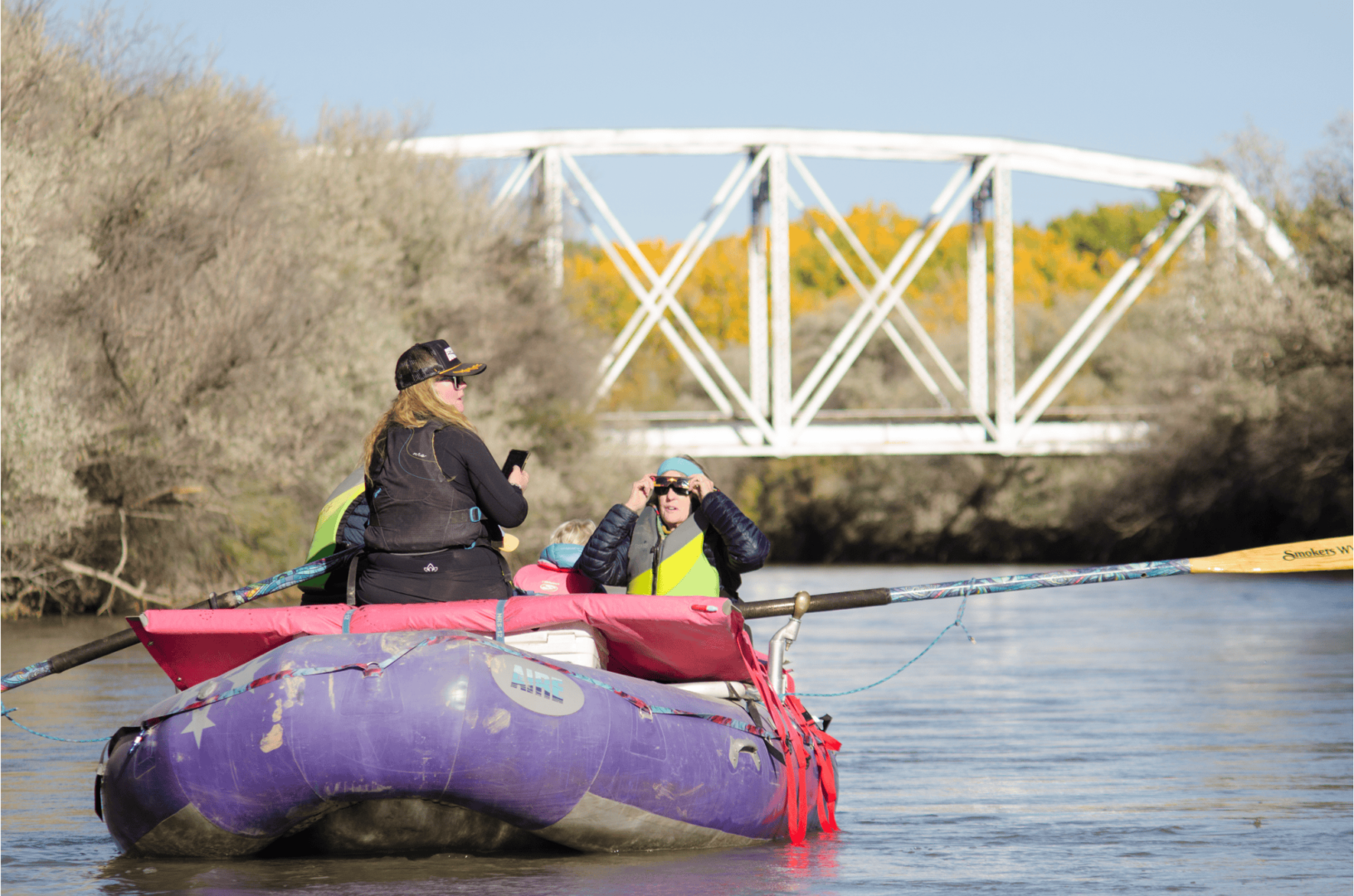
Being river trailblazers was not exactly what Ryan and Cody Dudgeon expected to do when they returned to Farmington after over a decade living out of state. But Desert River Guides, which they started in 2020 and got off the ground in 2021, has been growing steadily despite its start during Covid. The company is the first whitewater rafting outfitter in the Farmington area.
When asked about being the first river guides in the area, owner Cody Dudgeon said, “Yeah, we were kind of blown away by that, too. So that’s why we figured, why not? Why not be the first to try it out here in Farmington?”
And it dovetails delightfully with the area’s recent and ongoing push to develop outdoor recreation as an economic driver in transition from long reliance on natural gas production and the two coal-fired power plants which have seen slowdowns and closures in recent years.
It didn’t hurt that the Dudgeons received significant encouragement and even a bit of a friendly nudge from local community leaders after getting involved in the community. They took an interest in the cleanup and restoration of the Animas and San Juan rivers as part of the local River Reach Foundation, a non-profit organization dedicated to the protection, promotion, and enhancement of Farmington’s riverine corridor.
“We became members of the River Reach Foundation, and they kind of put a bug in our ear that our town could support and may even need a river guide service,” Ryan Dudgeon said. “It had never really been on our idea list. But when they kept asking us, we gave it some serious thought and decided we could give it a shot. So, it came out of that encouragement.”
And it has been quite a shot as the go-getter couple, who are also both teachers, have tapped into their fellow educators to create a significant tour guide family that has grown extraordinarily in just the few years that it has been operating.
“We’ve been open for three seasons,” Cody said. “And each season has been progressively growing. And it’s been great.”
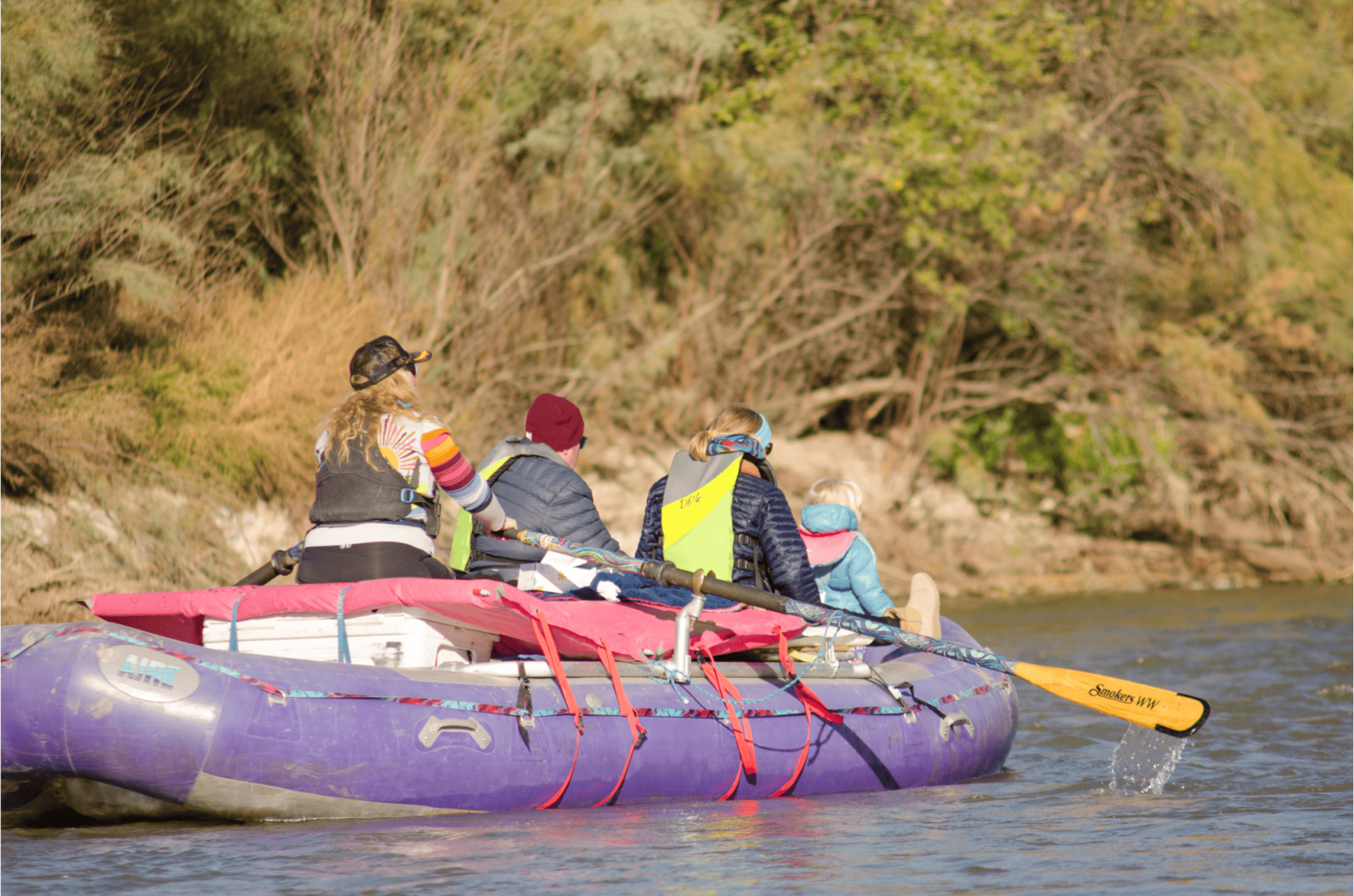
BACK TO THE BEGINNING
While Cody frequently spent lazy summer afternoons idly floating in inner tubes down the Animas River as a kid, the call of the river was not really something that Ryan heard while growing up in Farmington, although she does remember occasionally swimming in the rivers. They never really realized, however, just how big a role the rivers would come to have in their lives.
It started when they were living in Durango, Colorado. “A friend of ours had done the training and was a raft guide for a summer. The next spring she said, ‘Cody, you should really do this guide training. It’s fun, it’s so cool.’ And I was like, ‘You can just go become a raft guide? Okay, I’ll do that.’ I had never even considered actually getting paid to raft guide before I took the training,” he said.
Shortly after the end of the course, the couple moved to Missoula, Montana. Until Cody’s training, they didn’t do any rafting. Sometimes they would swim in the river or go tubing, but it wasn’t a big part of their lives. And so, it wasn’t until they got to Montana that Cody became a full-time guide.
The next year, after Cody’s first season, they both really began to get their water wings by spending endless summer days running the rough waters of the Clark Fork River in Montana, and the Lochsa and Salmon rivers in Idaho.
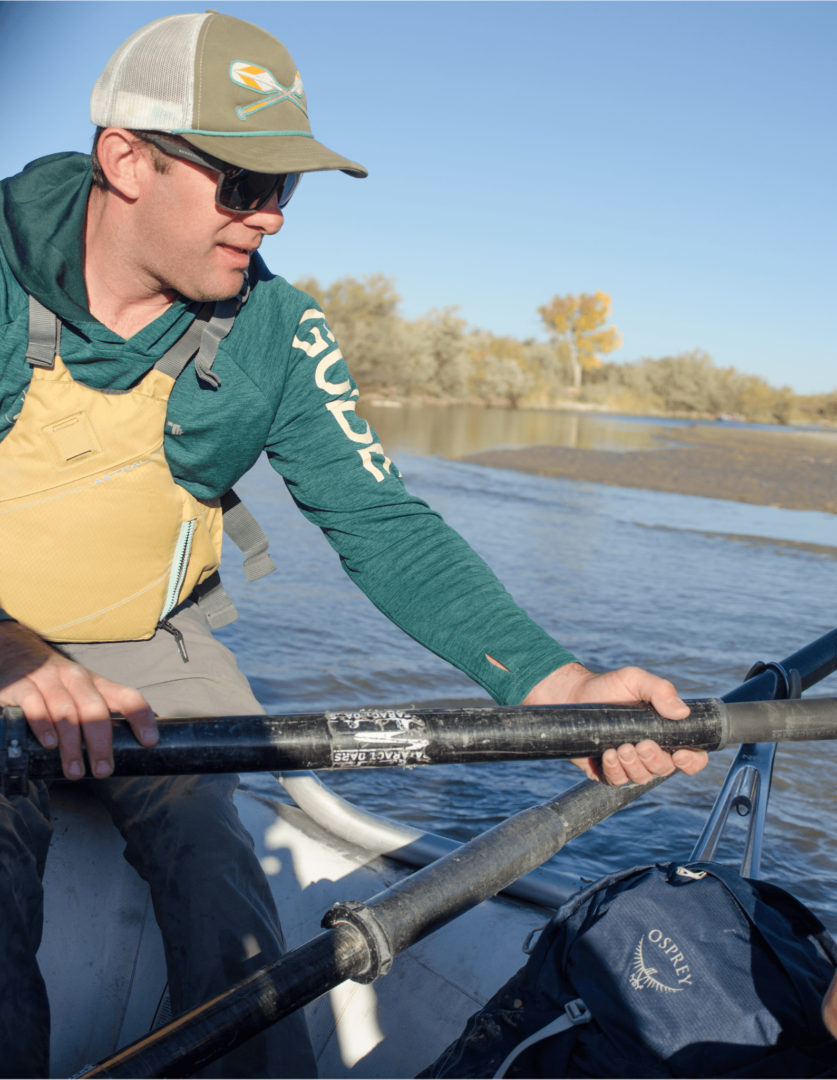
RIDING CALM WATERS
The put-in for the San Juan River is a rough, dirt slope with a gradual incline between a curtain of Russian olive trees toward the water at the edge of a parking lot tucked behind SunRay Park & Casino on the San Juan County Fairgrounds. But a few years ago, even that much access was unavailable as the rivers had been a largely unutilized resource.
“The City of Farmington’s Outdoor Recreation Industries Initiative came to us with questions about what a commercial raft company needs; what would make it feasible to have a business here? Having boated the local rivers on a couple of occasions before they came to us, we knew the river access was really poor,” Ryan said. “The accesses themselves were muddy, overgrown, hard to drive into, or you had to carry a boat a really long way. Commercially, you don’t want your customers carrying a raft 500 yards to get to the river. We talked to them about the developments that needed to be made before it would be feasible to consider having a raft company here.”
The Animas, which relies so much on the spring runoff and seasonal rains, is not a year-round ride, so the San Juan takes priority in the late summer and fall, they said.
“Largely because the Animas River is obviously seasonal, the San Juan River access needed to be more viable if a commercial company was going to be established. The city developed the river access that we just used to take out at the Westland Park (at the end of the run),” Cody said. “Over the last three years, the city and county have made access better and better. Beyond that, the county has also helped by ensuring their river access is open and available at McGee Park, where we started, year-round. San Juan County also built a new Animas River access up NM 550 at Cedar Hill, upstream of Farmington quite a way. The developments made by San Juan County, and the cities of Farmington and Aztec, have greatly improved river access, and it is highly beneficial to the community of rafters and kayakers in the area, and our business as well.”
The largely rapid-free San Juan River meanders lazily through a wide channel, with slight riffles heading downstream. Cody, perched atop a captain’s chair at the stern, wields a pair of large oars, sending the rubber craft filled with eight passengers gently on its course in pursuit of Ryan as she pilots another raft also filled to the brim.
Overhead, a Swainson’s Hawk lazily circles as it catches the updrafts and downshifts of the breeze. Other raptors make frequent appearances along the plentiful hunting grounds. Bald eagles have been known to roost on the towering cottonwoods. Suddenly, the boat shudders and catches on a sandbar in a shallow portion of the river. Cody tries in vain to push the heavily laden craft ahead as everyone aboard does their best seated limbo moves to add some forward momentum.
“This happens sometimes this time of the year,” he explains as he jumps out, the water not even reaching his waist, then pushes it free. “No matter how many times we ride the rivers, the sandbars and shallow areas are always changing. It’s impossible to know every bit of the river.” The momentary lapse is a brief interlude as the craft quickly regains its movement and Cody clambers back in and begins plying the stroking oars again.
Before long, a steel bridge complete with artistic girders crosses above the river. The former Miller Street Bridge is a 270-foot-long span that was built in 1899 for the railroad. The structure was eventually retired and then sold. In 1980 it was moved to the B-Square Ranch & Experimental Farm owned by mercurial local icon Tommy Bolack.
The river dissects the 12,000-acre ranch that includes two museums and serves as a wildlife refuge with more than 1,000 riparian acres. The area is home to a teeming gleam of wildlife with deer, pheasant, quail, hawks, eagles, and owls, as well as cattle, sheep, pigeons, and turkeys.
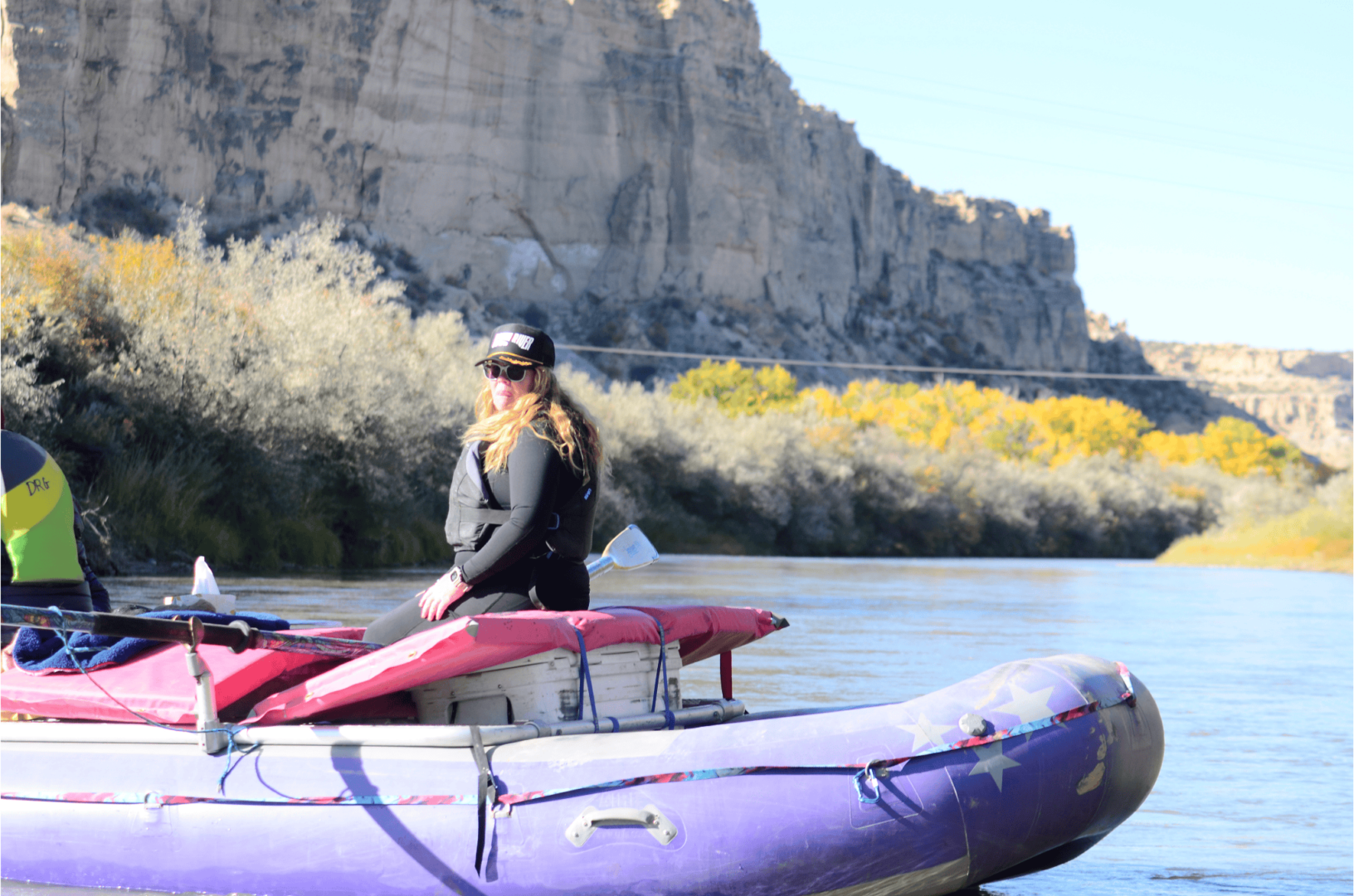
CAN’T BLUFF THIS
As the sun starts to get high and hot overhead, Ryan pulls over at a sandy beach to give everyone a chance to stretch their legs. She begins unloading a cooler stuffed with treats, highlighted by little, meat-filled pockets that she made and distributed liberally, along with cool drinks. After the break and craning necks upward at the rolling hills and tan, wind-sculpted sandstone bluffs, the journey continues. The cliffs rise higher as Cody discusses his philosophy of being the boat captain.
“I think the biggest thing as a river guide is that you’re not just a tour guide; you’re there as a professional who can teach your customers about how to stay safe and whatever else may come up about the rivers,” he said. “A lot of times, the vegetation and the wildlife are topics of discussion. The riparian area and the invasive species that we have been trying to mitigate are also on people’s minds. There are many different topics that come up with different groups, and a guide should try to know something about a lot of them.”
As a matter of fact, sometimes the discussions can be positively unexpected, even in an area where Native American history is so much a part of the surroundings.
“One of the most historical conversations I’ve ever had was with a group that included a Japanese family. They were driving through the area on a tour of the ruins and such,” he recalled. “And they were also touring the Navajo nation because the father of the family had an obsession with the Navajo Code Talkers. And so, we got into a lengthy discussion about them and World War II history. So that was pretty cool. Just really widespread, variable stuff. You just have to have a personality where you can talk and be open to the conversation as it happens.”
On this ride, the conversation turns to the environment, the rivers, tourism, and making it all work together. While the San Juan has stretches of splendor, there are also eyesores as too many local residents still treat the river as a disposal site, especially for tires. Or some riverside homes build makeshift berms of packing pallets and filler.
In one of the open areas where the problems are not visible, “Isn’t it gorgeous? It’s just stunning, and nobody even knows it’s here,” Ryan said of the San Juan. “And that’s the biggest thing. Just getting people to understand that we have these beautiful resources in Farmington. Hopefully, that will promote conservation. Conservation because you saw that pile of tires out there (behind their office in Farmington)? I pulled those out of the river a couple of weeks ago; 25 tires. I knew the tires were there. So now I’ve got more work to do. We probably passed that many more today. And I was very sad because I worked really hard to get those out. I thought and I was hoping there wouldn’t be more, but we’ll be back on the river soon.”
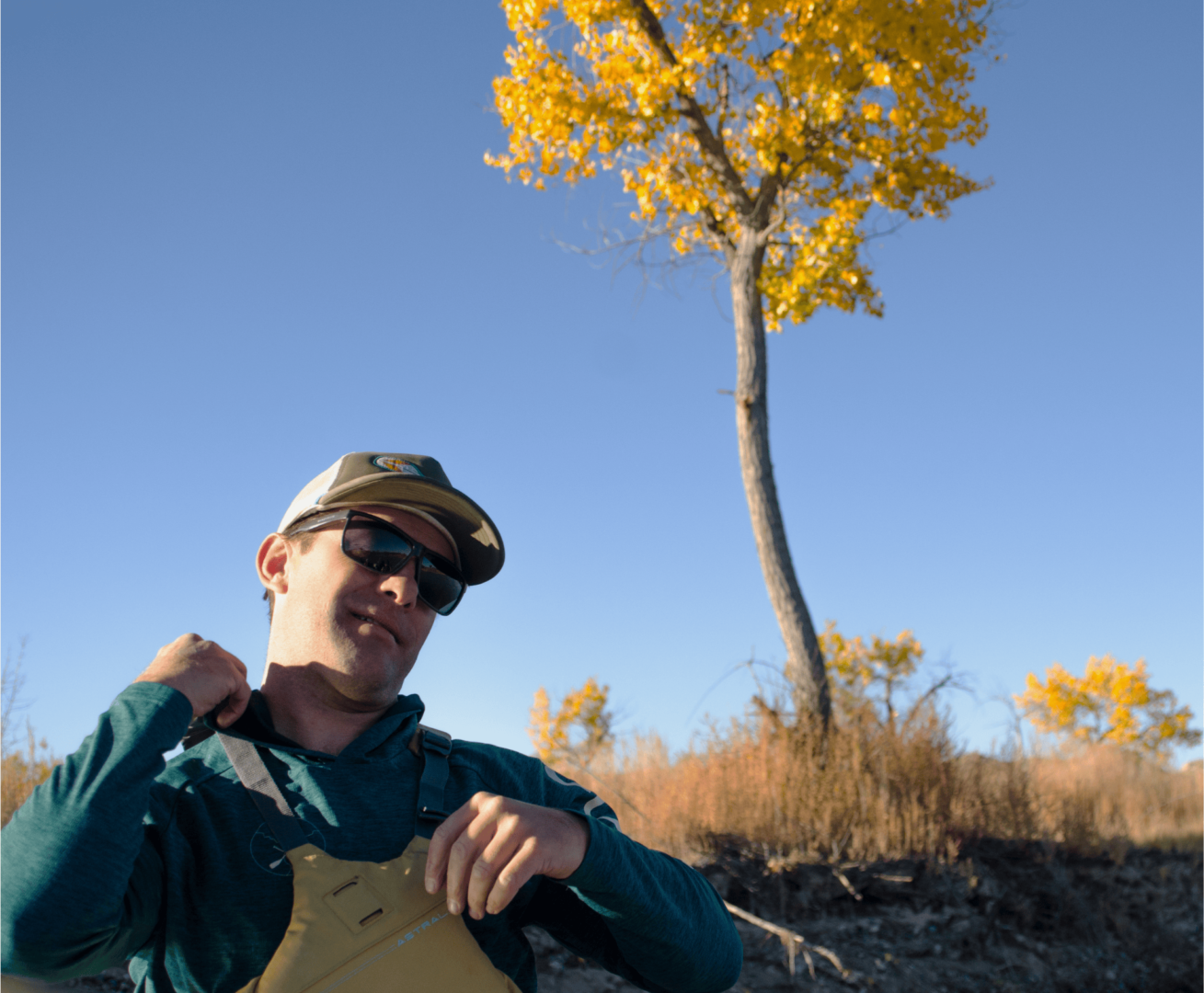
BUSINESS BUILDING
Although the Dudgeons have plenty of experience on the water in all kinds of river running situations, what they really enjoy about this operation is that it is truly family-friendly and suitable for all ages and levels of experience. Granted, people looking for the hair-raising, heart-pumping, adrenaline-building experience will find better options in New Mexico, especially on the Rio Grande south of Taos, but they won’t be able to bring their kids or their grandmother. What Desert Rivers Guides provides is an invaluable resource for the area that is fun for all ability levels.
And while that on-river experience is invaluable and cannot be duplicated without having earned it by the tried-and-true method of doing it, they also quickly found out that it was not as simple as buying rafts, building a website, and waiting for folks to start rolling in.
“You wouldn’t want to start a company like this without having someone who is knowledgeable about river use and rowing and how to work inside the creases and moving through the river,” Ryan said. “As you saw today, there are points where you get shallow water and, even with guides with 17 to 20 years’ experience, they can get slowed down by the rocks or sandbars. And then on the opposite end of that when there’s whitewater, you need to have somebody that knows how to navigate that type of stuff as well. So, the background of having that river knowledge is very important.”
But, that’s just a place from which to push off. Luckily, the support locally was enough to help through the business shoals.
“I think we both would agree that having a little bit more training as business people might have been a good thing to start this out,” Ryan added. “But yeah, we’ve been working with the Small Business Development Center at the college and have done some seminars and stuff that have been available. We’ve been learning more about being business people. But you wouldn’t want to do this without having that river knowledge, as well, if not first. On top of that, the logistics of shuttling customers and vehicles, getting the timing right takes some forethought and practice. We have a shuttle driver on staff that has to have a CDL bus driving license. And there’s just a lot of moving pieces to a raft company. And so, having that previous knowledge was definitely beneficial because we’ve seen how it works. And we worked for a large operation (that worked in Montana and Idaho), but it’s a family-owned business, so it was similar to what we are doing. That’s what we knew we wanted to start with: a family.”
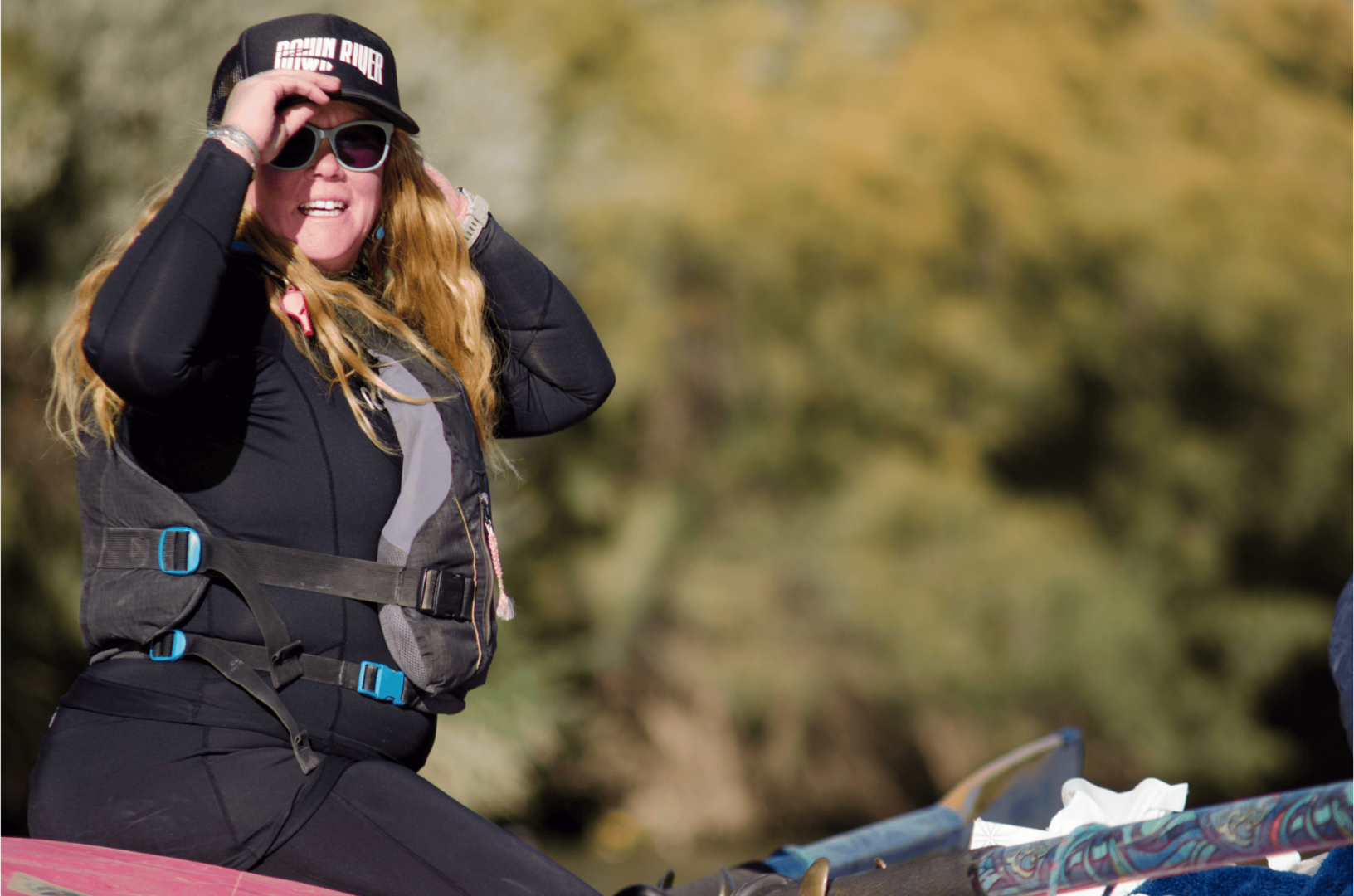
RAFTING THE FUTURE
The Dudgeons see the growth continuing, and when they look to the future to enhance their company, chief on the list is expanding their offerings by incorporating multi-day excursions that combine the best of day trips and overnight experiences.
“It’s really cool that, so far, we’ve pulled it off. I’m pretty impressed with the fact that we even tried, you know, and like you said, it’s the success. No, it’s not surprising, but it is cool,” Ryan said. “It feels like we’ve worked hard for something that we really believe in.”
As for the down-the-river piece, well, that remains to be seen, but plans are a-brewin’.
“I think we’re going to try and start expanding into doing multi-day trips. That’s really where I would love to get into, but we really just have got to figure out where, who, how, and all of those logistics,” she said. “I mean, it’s definitely going to be more involved, but it would be so much fun. Definitely New Mexico-focused, just because that’s where we are, and we love it here. And there is opportunity to make floats happen, possibly a three-night trip to somewhere near the Four Corners National Monument. So, we’ve been working on that, and we just have to figure it all out.”
The future is bright for these locals who are trying to bring the joy and benefits of river rafting to their community. In their own words, “All forward, we will see you downstream.”
Photos & Editorial by Glen Rosales
Desert River Guides – Farmington, NM